The Ellora Cave Complex, located 29 kilometers North-West of Aurangabad, a prominent city situated 300 kilometers away from Mumbai in India, is a fascinating historical site. Originally known as Elapura, the complex consists of temples and monasteries dedicated to Buddhism, Hinduism, and Jainism, dating back to between 600-1000 AD. Carved out of volcanic basalt rock, this extraordinary group of caves showcases the rich religious and cultural history of the region. Although a hundred caves have been discovered, only 34 are currently accessible to the public, offering a glimpse into the ancient heritage of the area.
Long ago, the Deccan plateau was shaped by ancient volcanic activity, as molten lava cooled and solidified into layers of basaltic rock. Evidence of early human settlements dating back thousands of years has been discovered in this region, indicating its historical significance. Ellora’s strategic location near a prominent trade route, dating back to the Satavahana dynasty (271 BC to 30 BC), likely contributed to its continual inhabitation and preservation unlike the nearby Ajanta caves. While the exact construction period remains unknown, it is believed that the remarkable architecture of Ellora was a legacy of King Krishna#1 of the Rashtrakuta dynasty (760 AD). Detailed descriptions of this architectural marvel were recorded by Arab travelers who visited Ellora during the 10th century, shedding light on its historical significance and grandeur.
The series of caves have been carefully carved into the outer side of a semi-circular hillock, which extends about 2 km in the North-South direction. The Hindu Brahmanical monuments are located at the center of the arc, with Buddhist monasteries to the right (South) and the Jain temples concentrated on the left side (North).
Ellora represents a collection of diverse faiths coexisting in one place, highlighting the significance of religious tolerance during that era. Caves 1 to 12 are Buddhist monasteries, 13 to 29 are Hindu monuments, and 30 to 34 are Jain Temples.
Within the 34 caves of Ellora, Cave No. 16 showcases the ‘Kailasa temple,’ one of India’s most remarkable monolithic excavations. It’s astonishing to imagine that this mystical temple complex was carved out of a single rock between 757-783 AD. However, conflicting accounts also propose that the temple might have been constructed much earlier.
 SCENES FROM BUDDHIST CAVES, ELLORA, INDIA
SCENES FROM BUDDHIST CAVES, ELLORA, INDIA
I’ve spent a significant amount of time around Kailasa, exploring and photographing this stunning piece of art. The monsoon season is the perfect time to visit Ellora, as the surrounding area becomes adorned with lush greenery and breathtaking waterfalls. However, one must exercise caution when navigating the rocky terrain, as it can become quite slippery during the rainy season. Despite being denied permission by the security guards, I managed to sneak past the fence and capture the temple’s magnificent views from the hilltop.
The construction of Kailasa temple remains shrouded in mystery. The ancient builders demonstrated an adept understanding of the properties of basalt rock, chosen for creating one of the largest rock-cut structures in the world. Perhaps, at that time, it was comparatively easier to carve into this type of rock, which grew harder with the passage of time. Additionally, the temple is perfectly aligned with the Earth’s magnetic North-South direction and faces precisely towards the West.
The Kailasa temple, an astonishing monolithic structure, is believed to have been created using a vertical excavation technique, which involved removing around 400,000 tons of rock over a period of more than 20 years. Unlike conventional methods, Kailasa employed a cut-out technique, presenting a monumental challenge considering the absence of modern machinery.
There are various theories surrounding the construction of this temple, with some speculating the involvement of a highly advanced civilization or even extraterrestrial intelligence. The interior of the temple is adorned with intricate carvings depicting Hindu epics, along with remarkable engineering features such as elevated bridges, rainwater harvesting systems, and intricate drainage tunnels.
Furthermore, the presence of hundreds of 4”dia holes and narrow, inaccessible tunnels has led many to believe in the existence of an underground city below the temple. The concept of an underground world is reflected in the sculptures found in the temple, with depictions of gods and humans on the upper half and smaller humanoid figures and Naga motifs on the lower half.
In recent times, some of the mysterious holes were sealed with concrete due to articles being lost and being impossible to recover. This has added an air of intrigue and mystique to the temple’s already fascinating history.
Ellora’s renowned for its strikingly vibrant mural paintings and artworks. The painted walls, adorned with sculptures, have retained their colors, thanks to the use of natural dyes that have stood the test of time. A recent scientific discovery has revealed that ancient artists at Ellora used a mixture of Cannabis (Marijuana) plant with the plaster to paint the murals. This ingenious method not only preserved the wall paintings but also regulated humidity and deterred insects, leaving the breathtaking art intact for centuries.
The era of religious harmony, albeit short-lived, faced a downturn with the ascendancy of Mughal rulers, who promoted animosity towards other faiths, resulting in detrimental effects on magnificent architectural wonders. In 1682, Mughal Emperor Aurangzeb dispatched a 1000-men army to dismantle the Kailasa temple. Despite three years of relentless efforts, the temple remained unscathed, bearing testimony to the unsuccessful assault through numerous broken and defaced statues. The Ellora caves have been designated as a UNESCO World Heritage site, with the hope that they will endure for many centuries, allowing future generations to marvel at the dedication and craftsmanship of their forebears.
A CLOSER LOOK AT THE MAGNIFICENT CARVINGS ON THE SIDE WALLS OF THE CORRIDOR. CLICK ON AN IMAGE TO WATCH IT IN FULL RESOLUTION.
INTRICATE CARVINGS ON THE SIDE WALLS OF KAILASA TEMPLE, DECORATED WITH MURALS. CLICK ON AN IMAGE TO WATCH IT IN FULL RESOLUTION.
- MATANGA, LORD OF WEALTH ON ELEPHANT RIDE
- YAKSHI SIDDHAYIKA UNDER MANGO TREE – CAVE 32 (INDRA SABHA)
How to Reach Ellora:
By Air :
- Nearest Airport : Aurangabad
By Rail :
- Nearest Railway Station: Aurangabad
By Road :
- Mumbai – Aurangabad – Ellora – 327 Km
- Aurangabad – Ajanta – 29 Km
Points to be noted :
- Tuesday Holiday
- Open from 9:00 am to 5:30 pm
Entry fee :
- Rupees 10 for Indian Nationals and visitors of SAARC & BIMSTEC Countries (Bangladesh, Nepal, Bhutan, Sri Lanka, Pakistan, Maldives, Afghanistan, Thailand and Myanmar)
- Rupees 250 any other foreign tourist
- Rupees 25 per camera
- Free entry for children below 15 years
















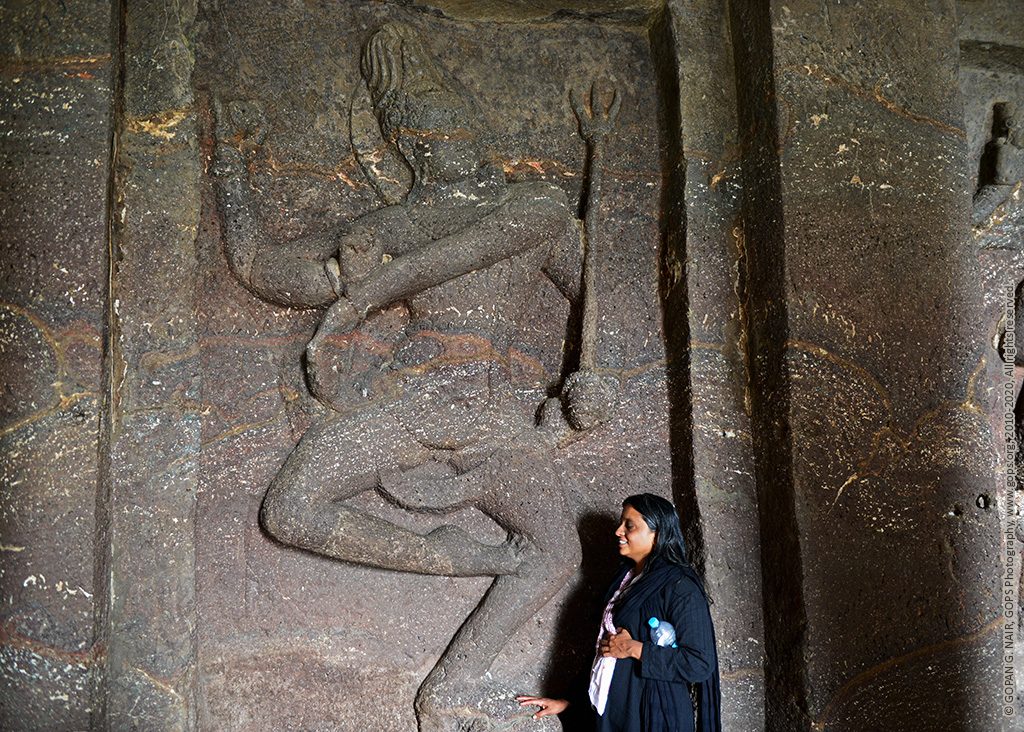
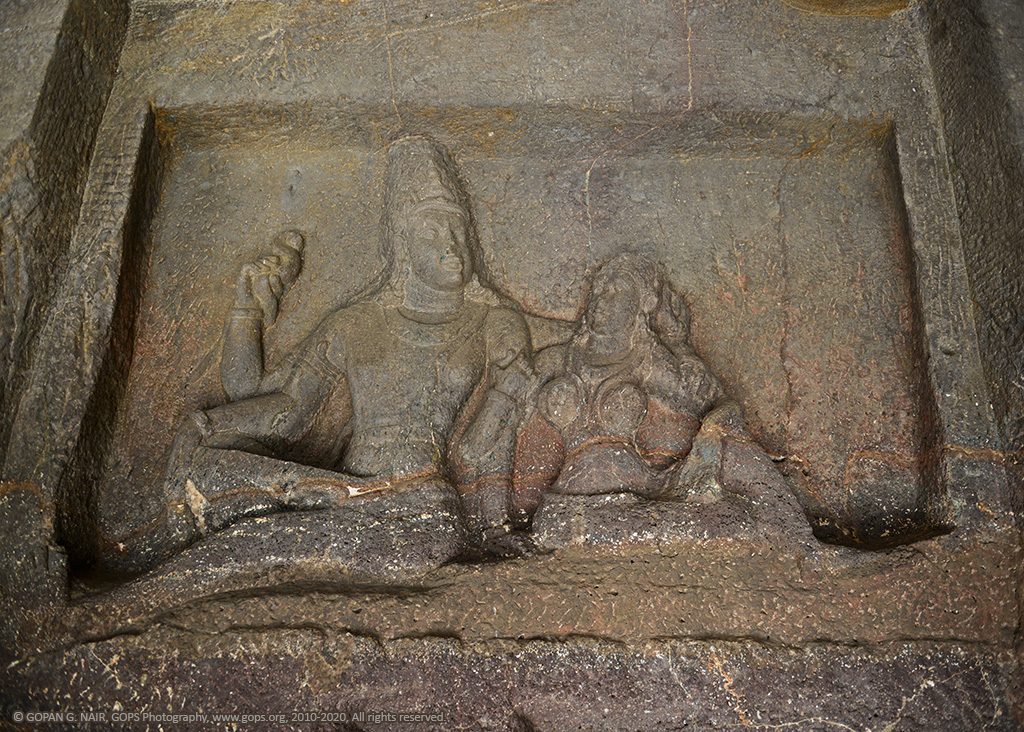
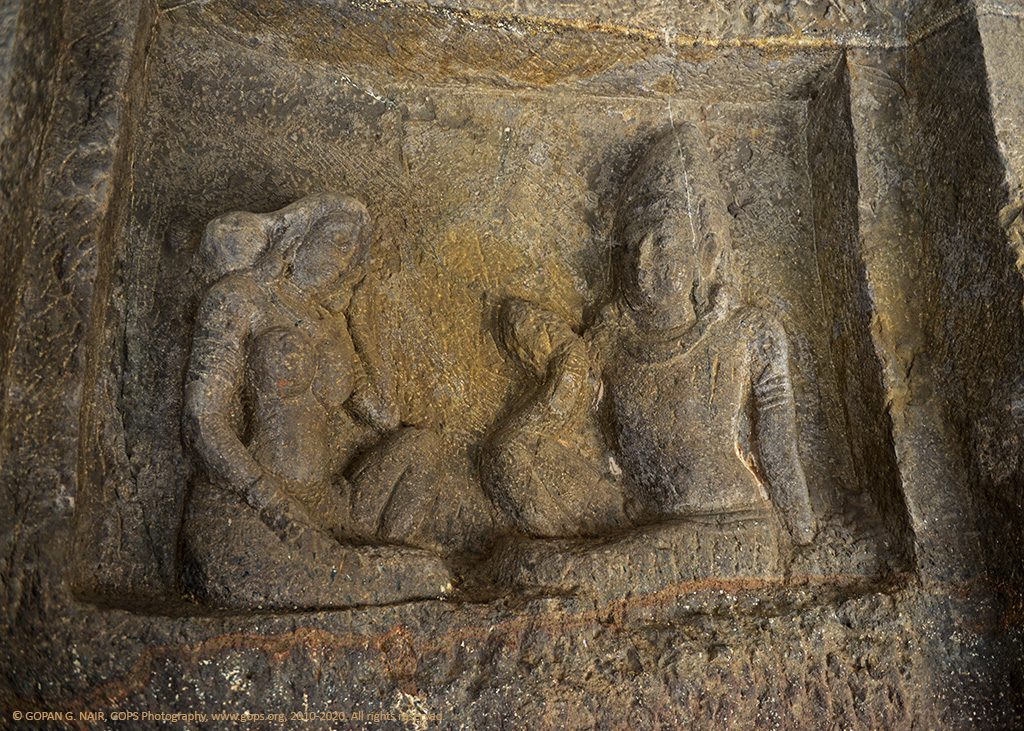

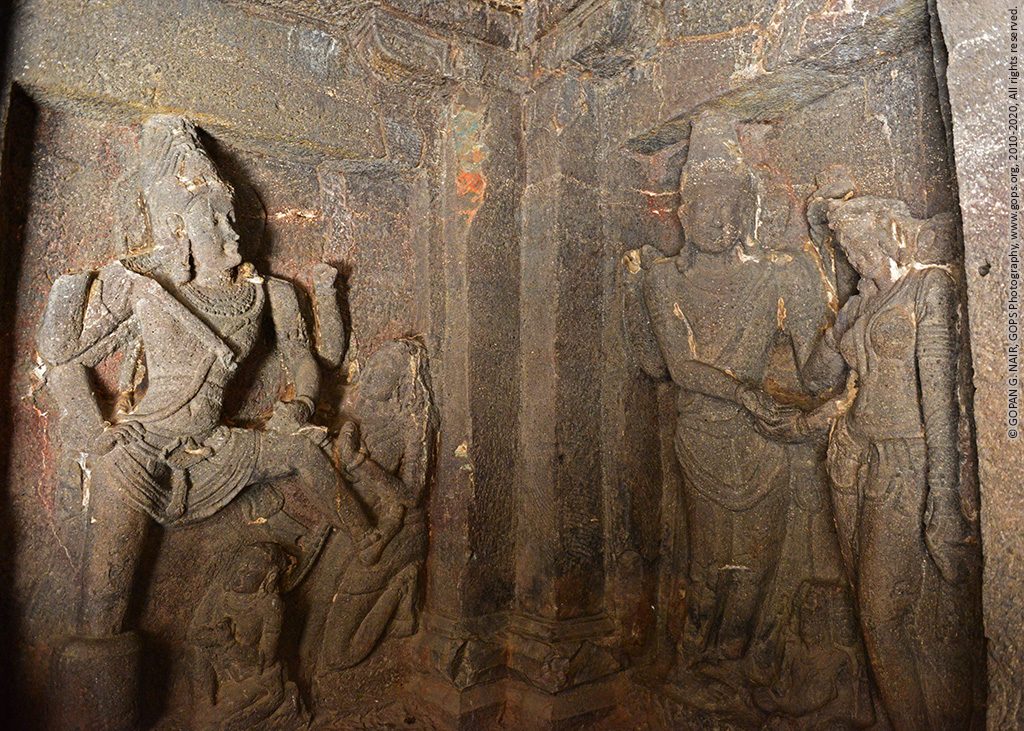
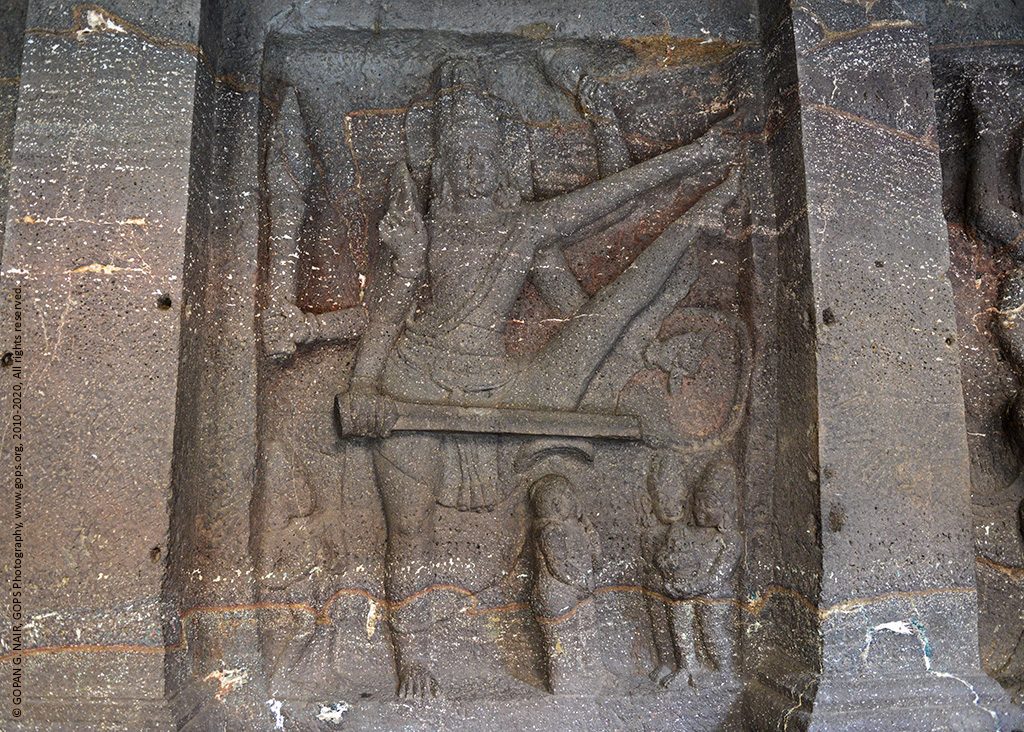
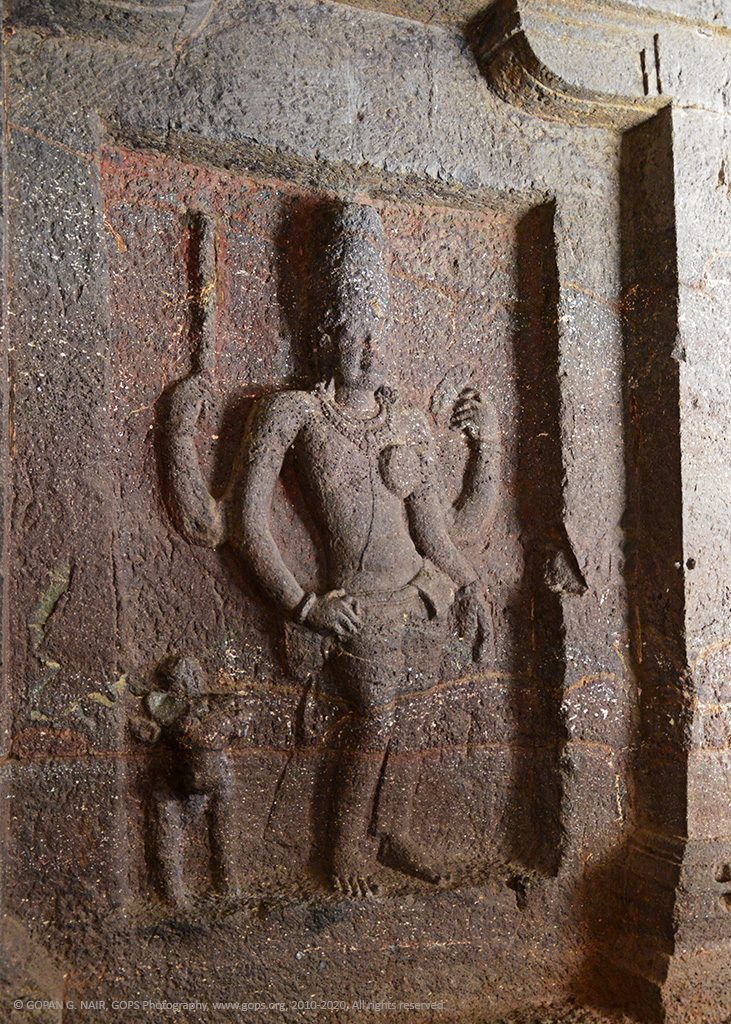


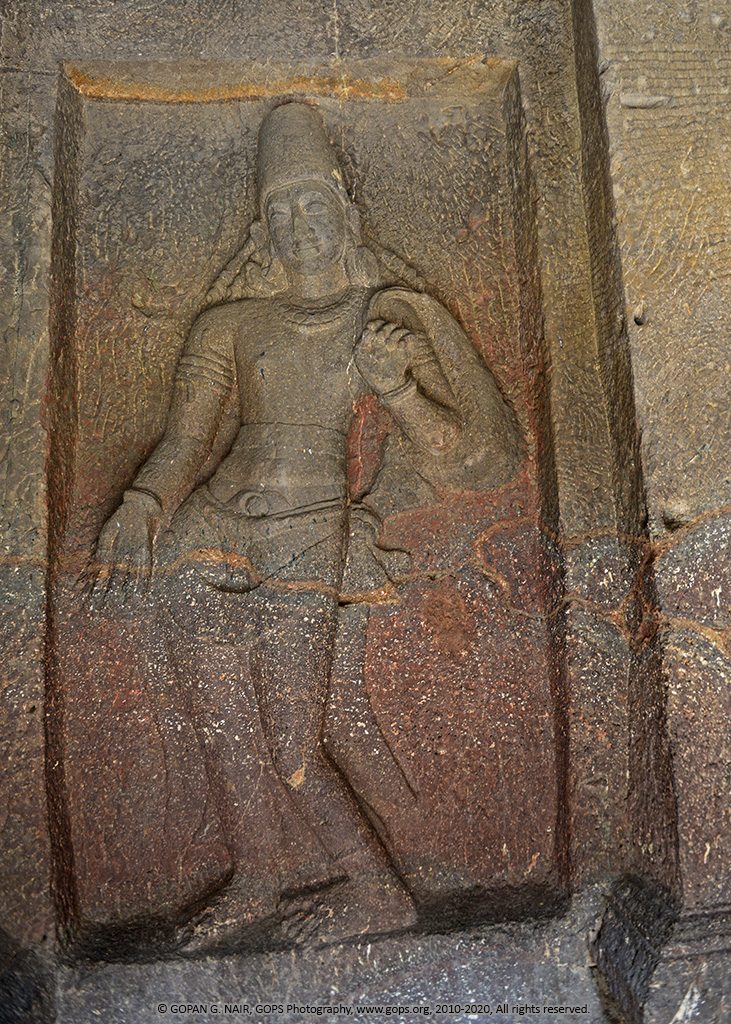
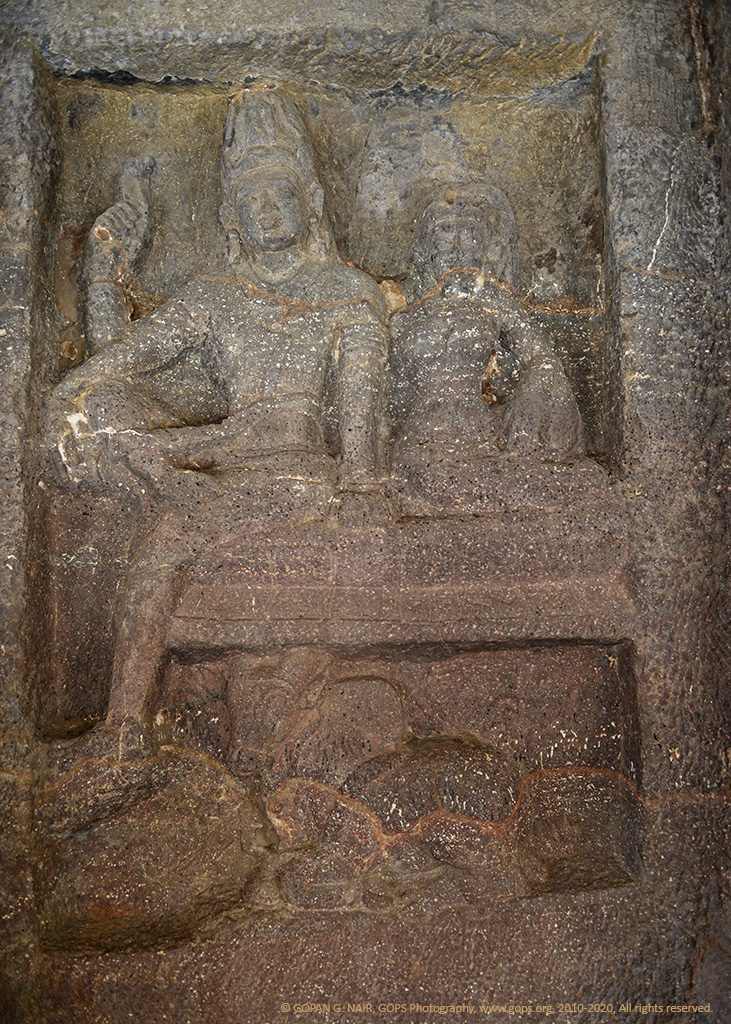



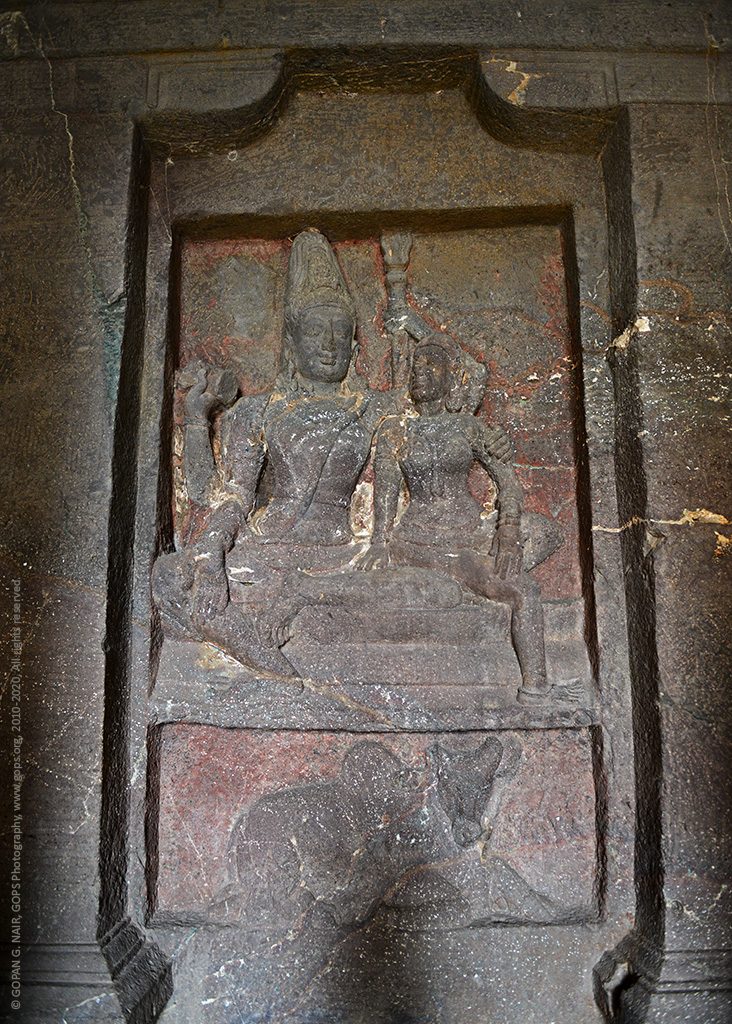
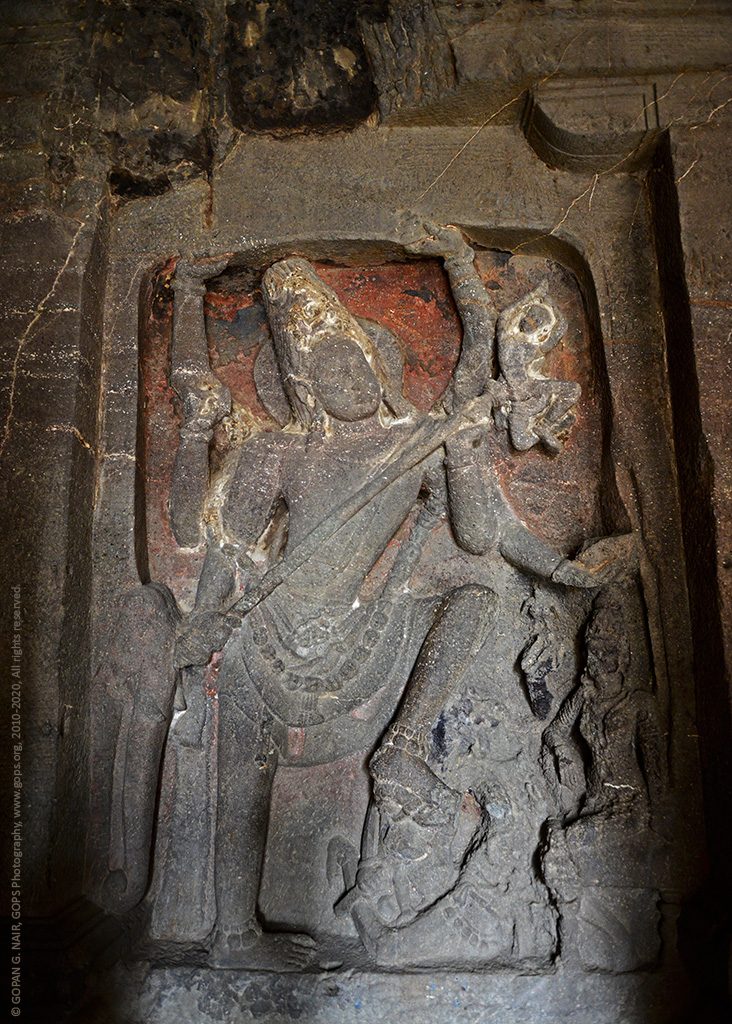

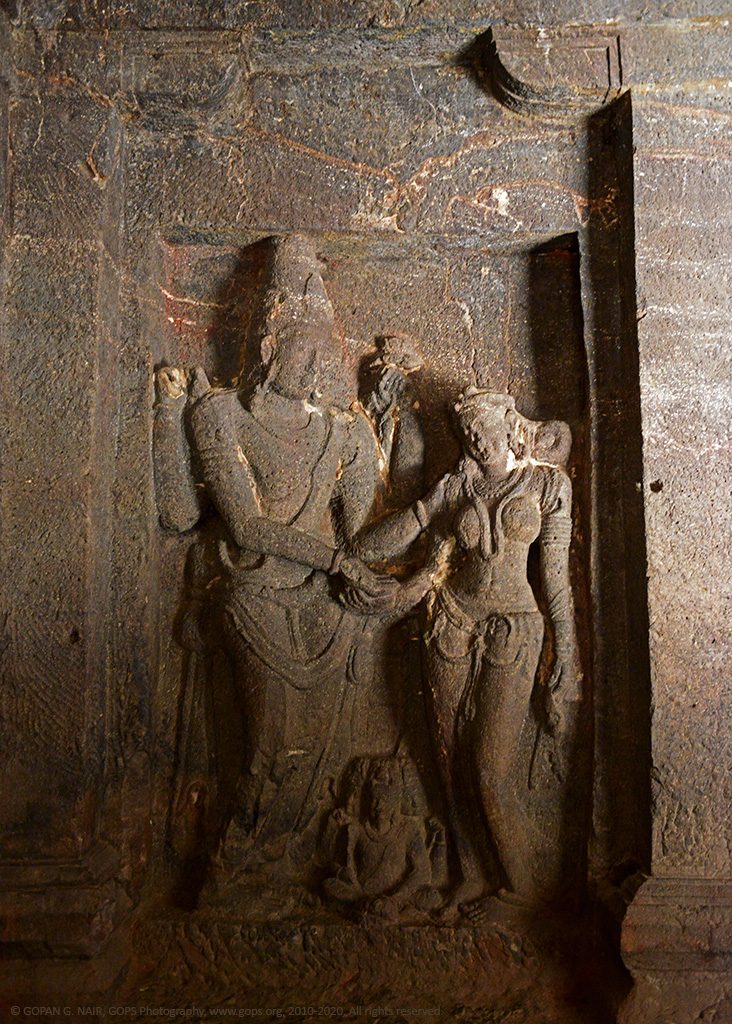

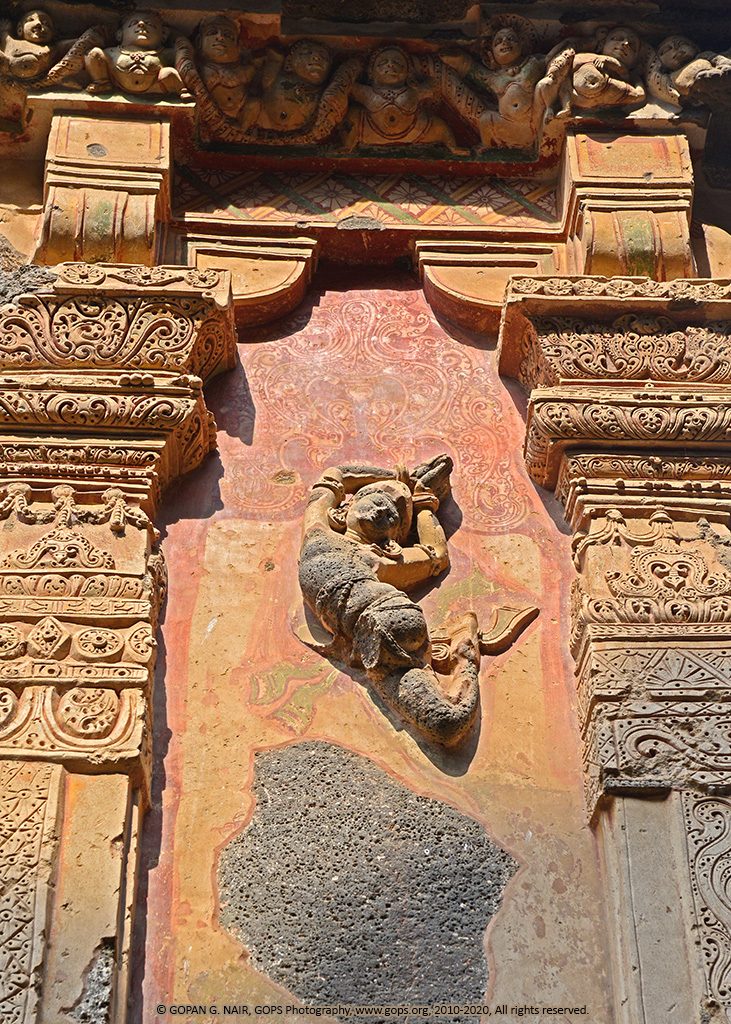


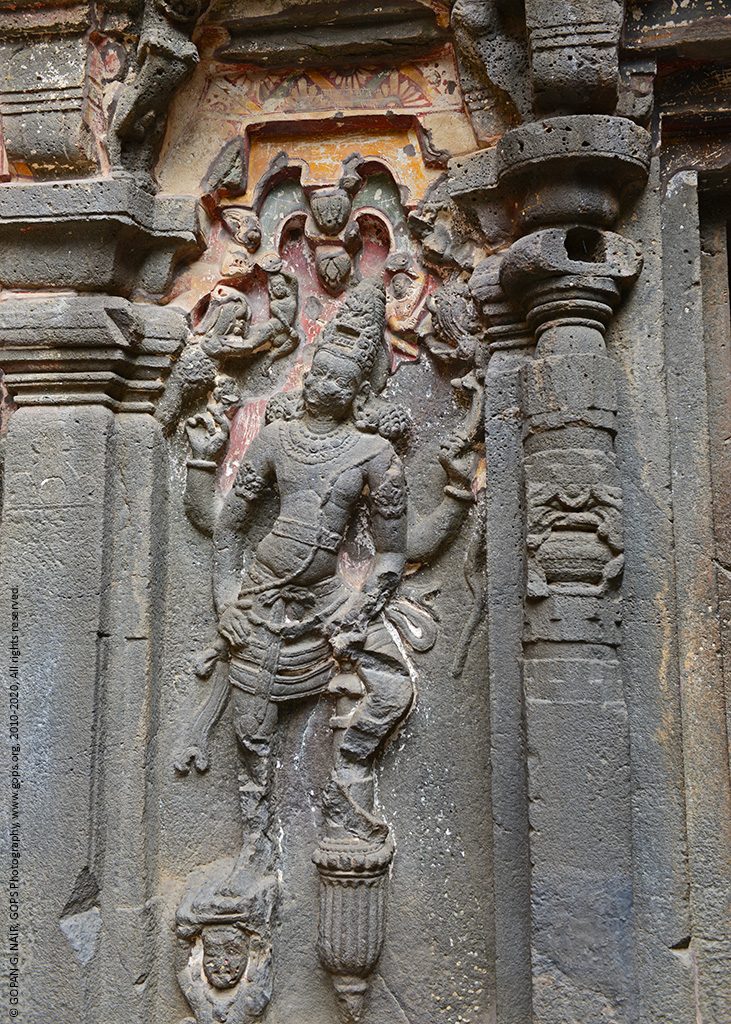

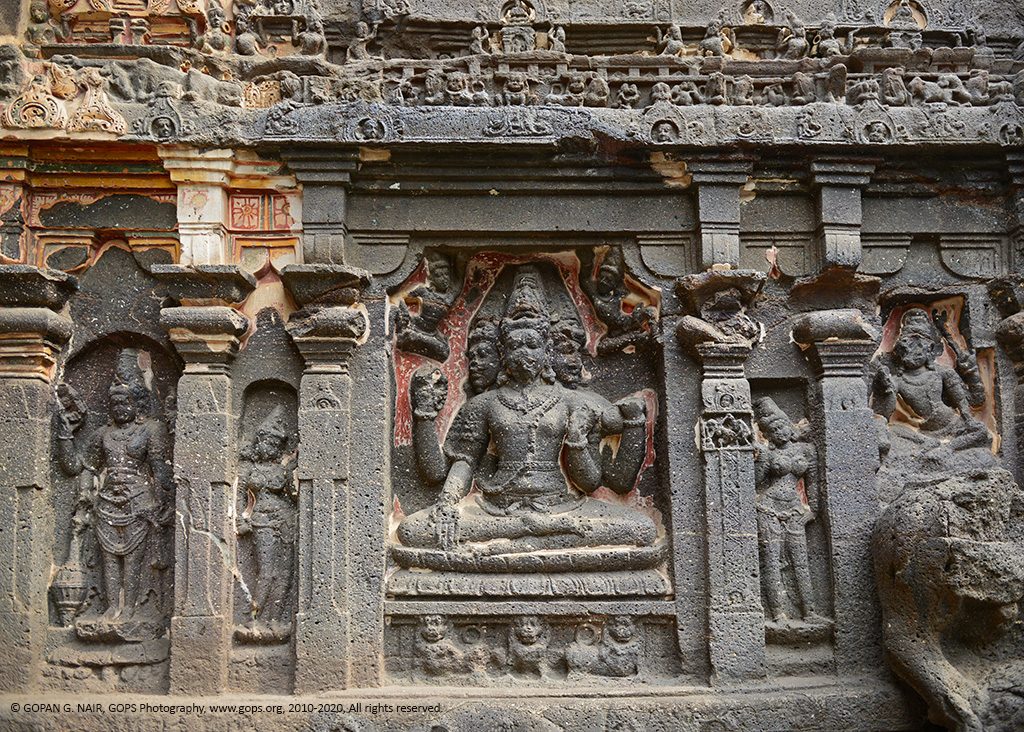
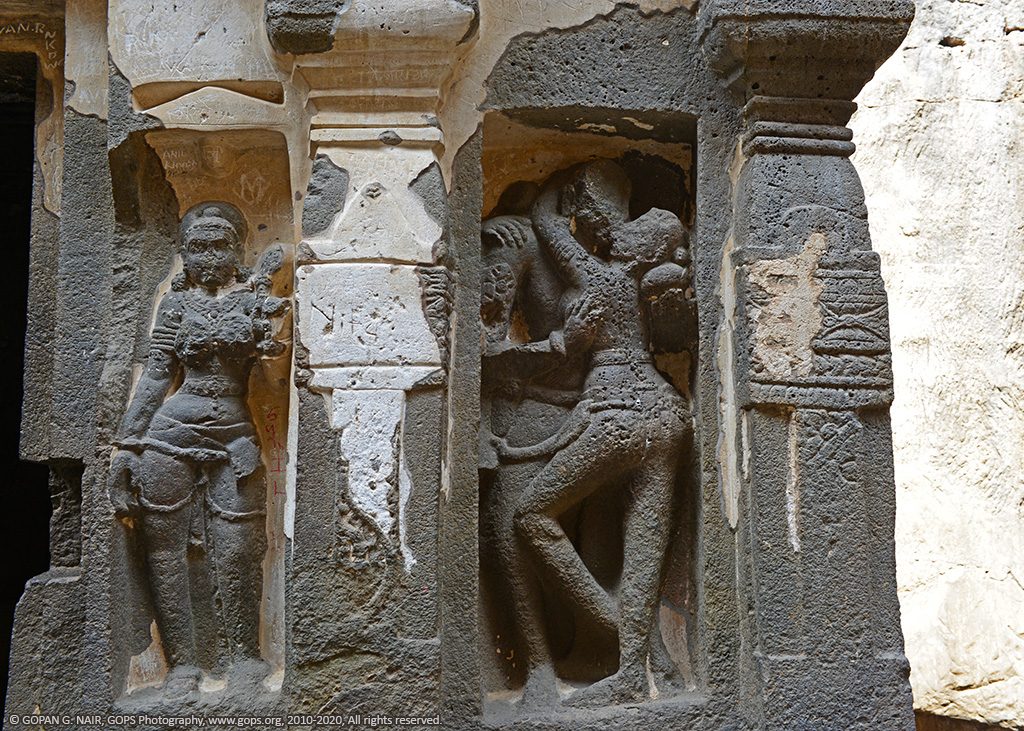

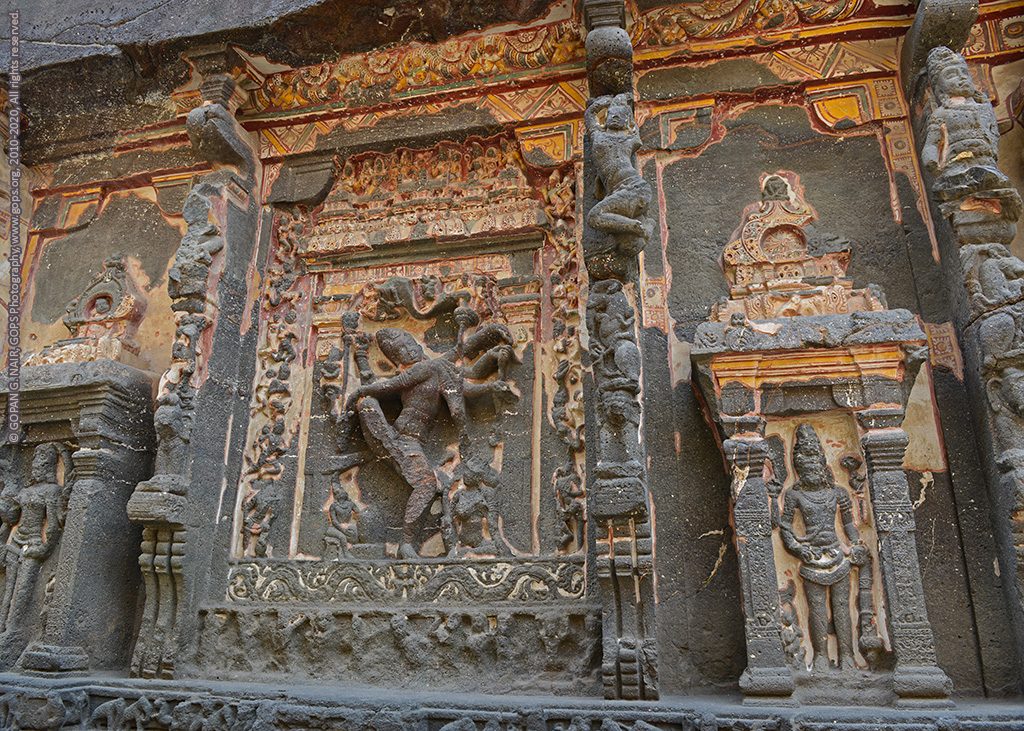
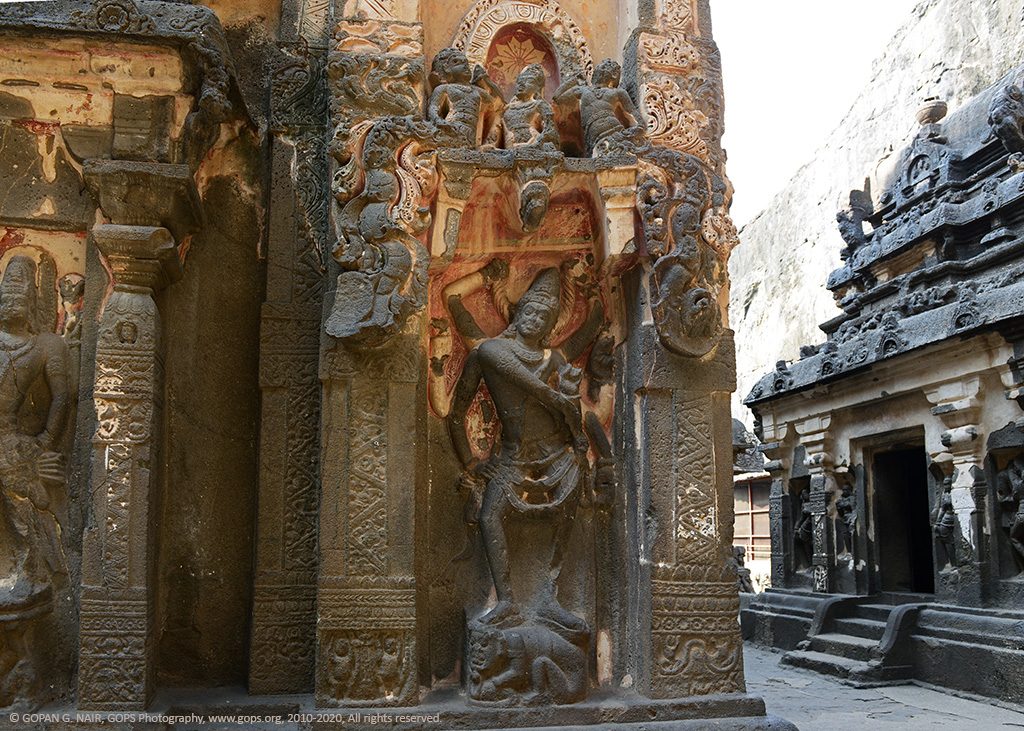




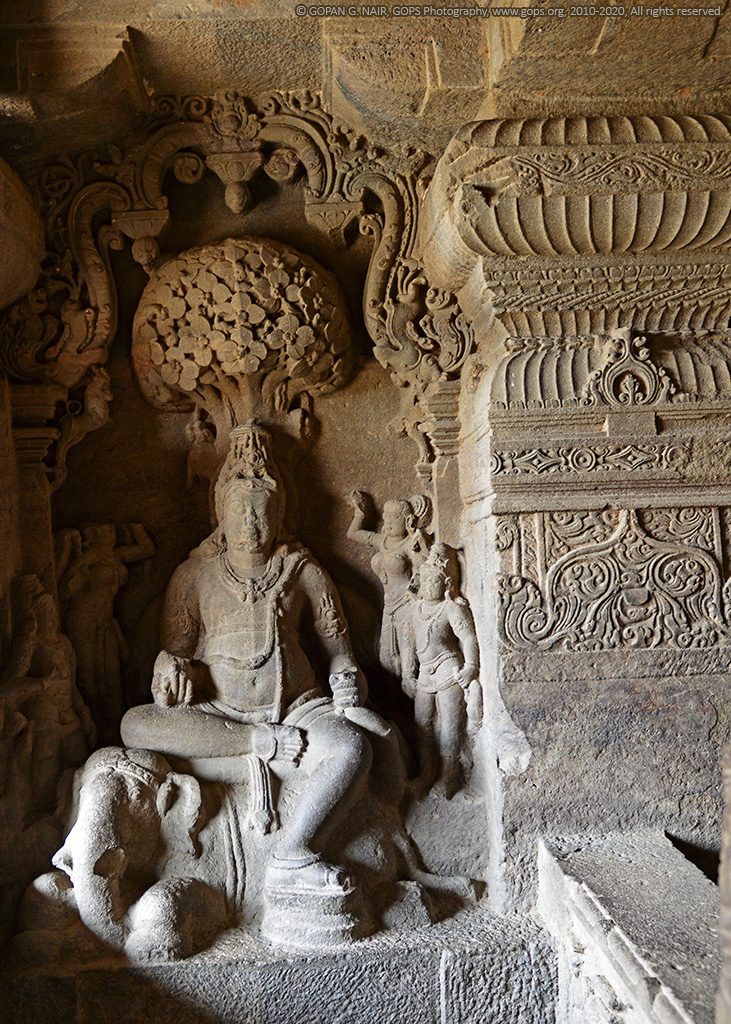


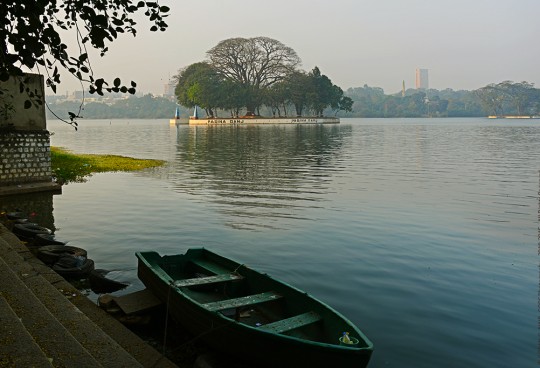

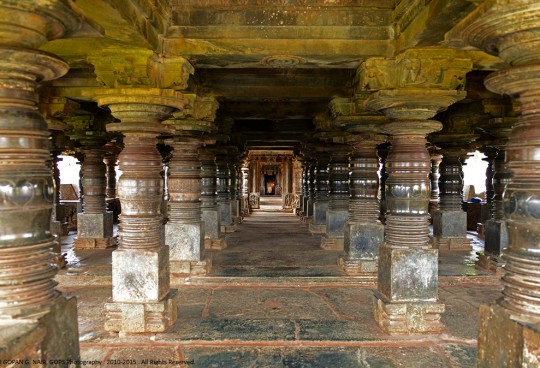
Koshy
November 18, 2016
Excellent writeup about one of the greatest archeological and artistic treasures of Ancient India!
GOPAN NAIR
February 04, 2017
Dear Sir, Thank you very much for your comments and support.
chandrakant
August 25, 2018
you have to take in sequence as per the guide Entrance of Gate
GOPAN NAIR
September 05, 2018
I did not understand what you meant by the comment.